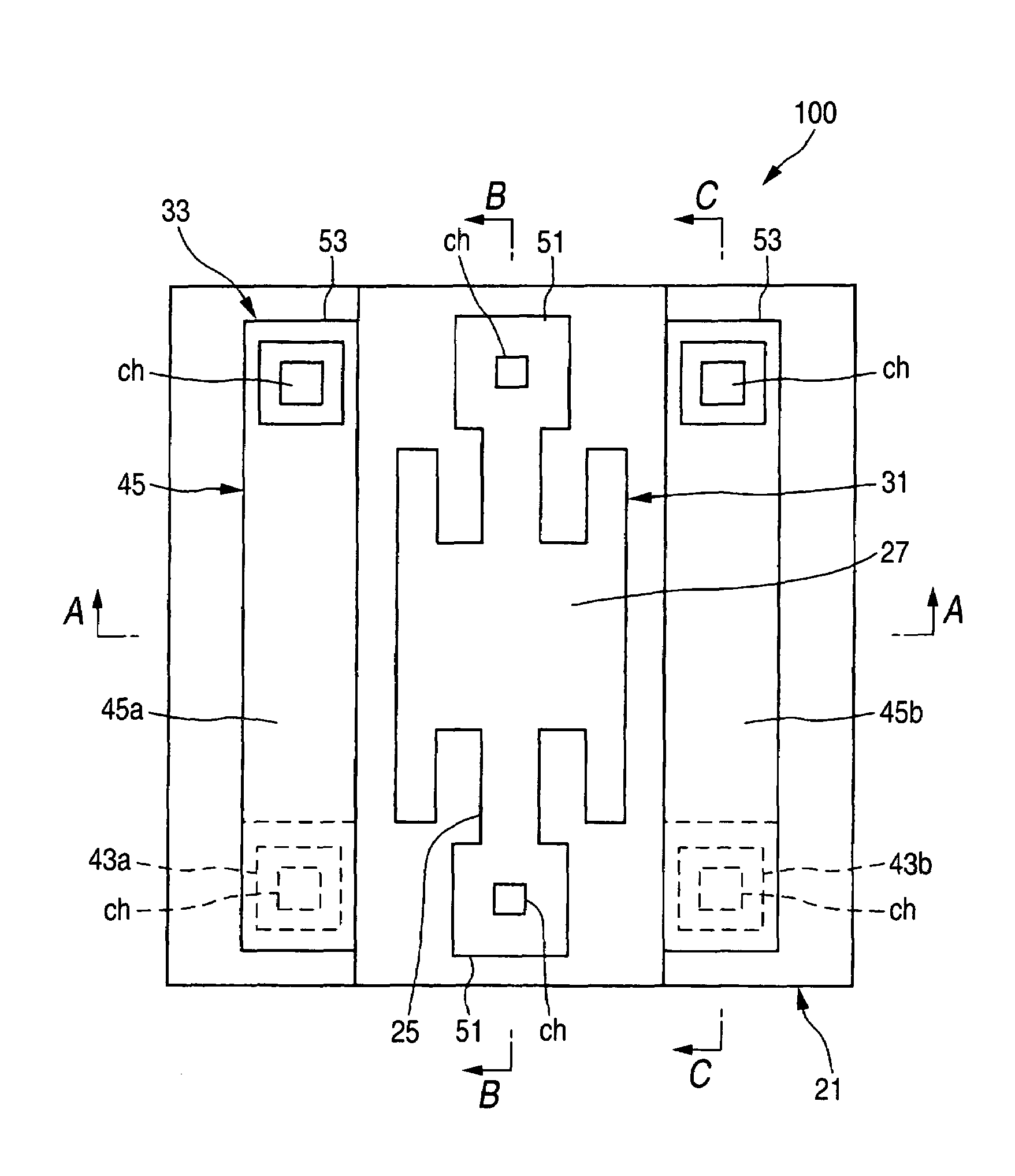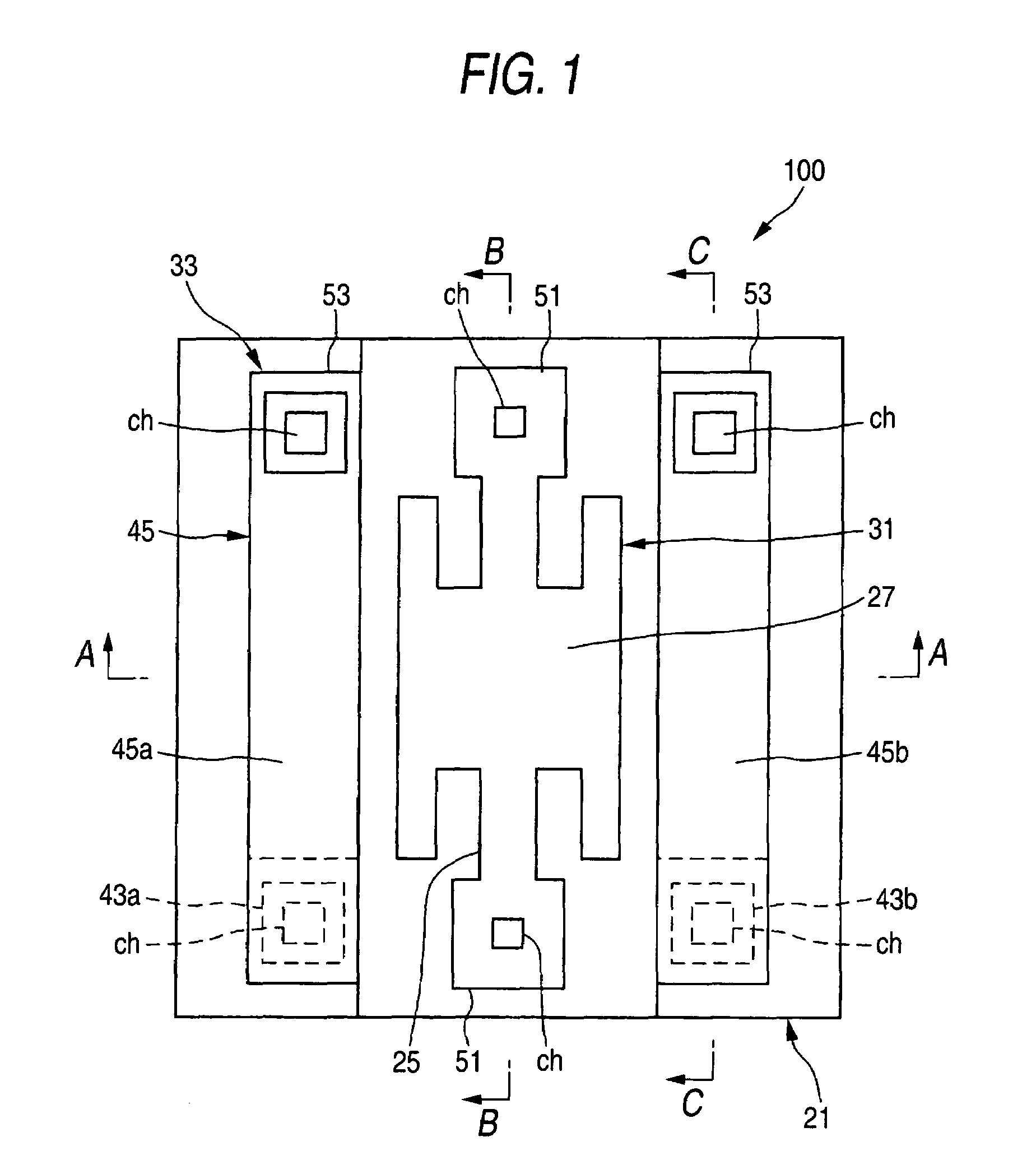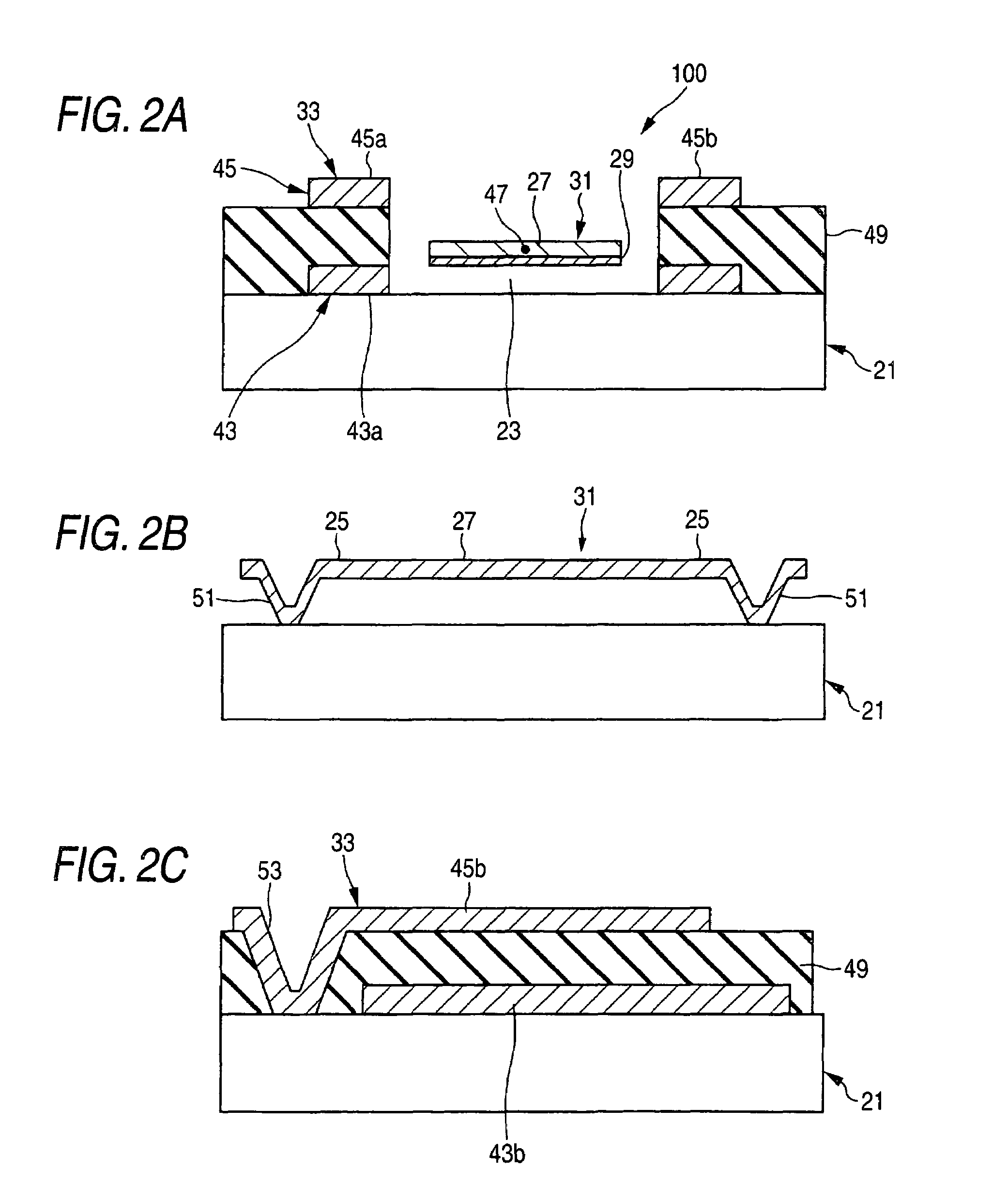Spatial light modulator, spatial light modulator array, and exposure apparatus
a spatial light modulator and array technology, applied in the direction of instruments, static indicating devices, optical elements, etc., can solve the problems of reducing the reliability of an element, increasing the overall mass of the movable section, and posing a limitation on high-speed movement, so as to improve the durability of the exposure apparatus, improve the reliability of the element, and improve the effect of the utilization factor of ligh
- Summary
- Abstract
- Description
- Claims
- Application Information
AI Technical Summary
Benefits of technology
Problems solved by technology
Method used
Image
Examples
first modification
[First Modification]
[0250]FIG. 27 is an enlarged view of the principal section of the first modification of the sixth embodiment, wherein the microlens array shown in FIG. 26 is provided with a prism.
[0251]In this modification, the microlens array 113 of the spatial light modulator array 500 provided in the light source / SLM unit 129 is provide with a prism 161 which is arranged so as to correspond to the microlenses 115. The light entered the mirror section 27 at this refraction angle is reflected in a direction different from the incident direction when the mirror section 27 is located at an OFF tilt position and reflected in a direction identical with the incident direction when the mirror section 27 is located at an ON tilt position.
[0252]Consequently, according to the first modification, when the mirror section 27 and the microlenses 115 are disposed so as to oppose each other, provision of the prism 161 enables reflection of incident light without retaining the mirror section 2...
second modification
[Second Modification]
[0253]FIG. 28 is an enlarged view of the principal section of a second modification in which the light entering the microlens array is tilted.
[0254]In this modification, a polarized beam splitter 163 has a polarized light separation surface 163a for reflecting the incident light originating from the light source at an angle other than the right angles. The angle α of the polarized light separation surface 163a is arbitrarily set in accordance with the positions of the microlenses 115 and the position of the spatial light modulator 100.
[0255]Accordingly, according to the second modification, the angle α of the polarized light separation surface 163a is set to 45° or more, the reflection angle of the polarized light separation surface 163a becomes an obtuse angle, thereby enabling a reduction in the thickness of the polarized beam splitter 163. Since the angle α of the polarized light separation surface 163a is set such that an incident light path and a reflected ...
third modification
[Third Modification]
[0256]FIG. 29 is a block diagram showing a third modification in which the microlens-array is disposed on the part of the beam splitter from which light exits.
[0257]In this modification, a third lens array plate 165 is provided on the part of the polarized beam splitter 141 from which exposure light exits. The third lens array plate 165 gathers a luminous flux that has been reflected from the mirror section 27 and passed through the polarized beam splitter 141.
[0258]Consequently, according to this modification, an object of exposure 121 can be directly exposed to modulated light, and an optical system close to contact exposure can be configured.
PUM
 Login to View More
Login to View More Abstract
Description
Claims
Application Information
 Login to View More
Login to View More - R&D
- Intellectual Property
- Life Sciences
- Materials
- Tech Scout
- Unparalleled Data Quality
- Higher Quality Content
- 60% Fewer Hallucinations
Browse by: Latest US Patents, China's latest patents, Technical Efficacy Thesaurus, Application Domain, Technology Topic, Popular Technical Reports.
© 2025 PatSnap. All rights reserved.Legal|Privacy policy|Modern Slavery Act Transparency Statement|Sitemap|About US| Contact US: help@patsnap.com



